Simulation System
Nintendo Arcade, 1974–1978
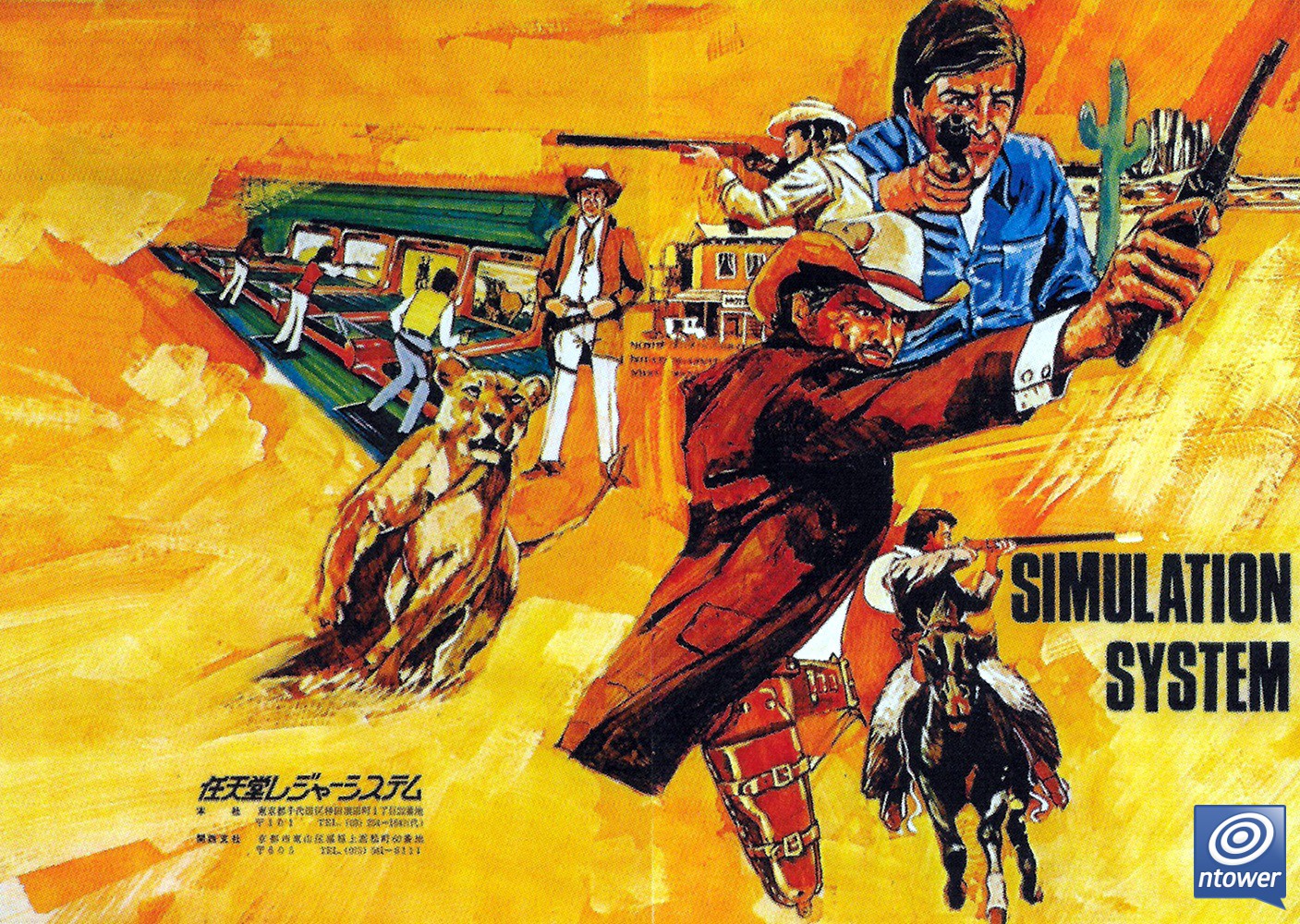
The October 1973 oil crisis caused a lot of problems for the Japanese leisure economy. Nintendo had bet big on the Laser Clay system and were now facing unprecedented financial problems as their customers pulled out.
The Nintendo Simulation System took the light gun technology from Laser Clay and rehoused it in a unit small enough that it could be set up in any amusement arcade, casino or hotel.
The Simulation System made use of 16mm film projections to display videos that appeared to react to the player's input. In reality, two films were running simultaneously, and the footage would switch from one to the other when the player hit a target.
Nintendo released several games using the Simulation System technology in the 1970s. Some units were even exported and sold internationally.
Gun Fight & Shooting Trainer (1974)

The two original Simulation System units were first released in 1974. Footage was projected onto a square screen, and the player would shoot at the targets from a few feet away.
The first units included the projection screen, a long spacer and a ventilated unit that housed the projectors and other electronic components.

Gun Fight
Players would wear a holster containing a pistol. The holster also contained a switch that could detect if the pistol was holstered or not.
For ¥100, players could choose between four videos. Each video contained footage of five gunslingers, played one after the other in increasing difficulty.
In the video footage, the gunslinger's eyes would flash, and the player would need to whip out the pistol and shoot.
If a player survived all five duels, they would win a free game.
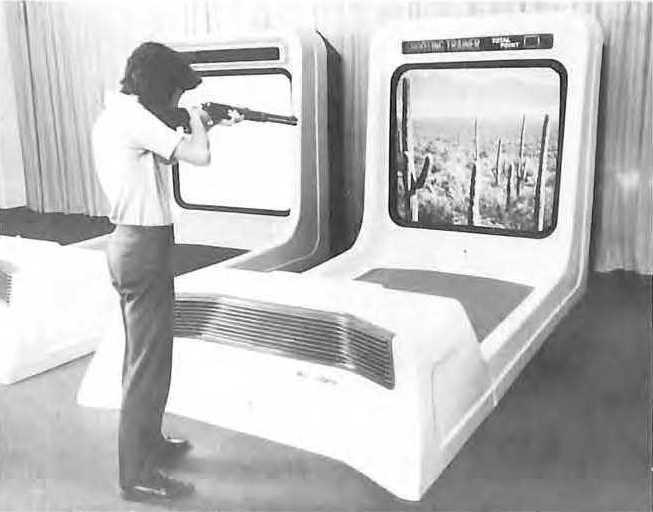
Shooting Trainer
Players used a rifle, similar to Laser Clay, to shoot bottles projected onto a wild west scene.
For ¥100, the player had 90 seconds to shoot 40 bottles with just 40 shots. The player would receive a rank (from A to C) and a perfect game would win the player a free game.
Simulation System 1975 Revision
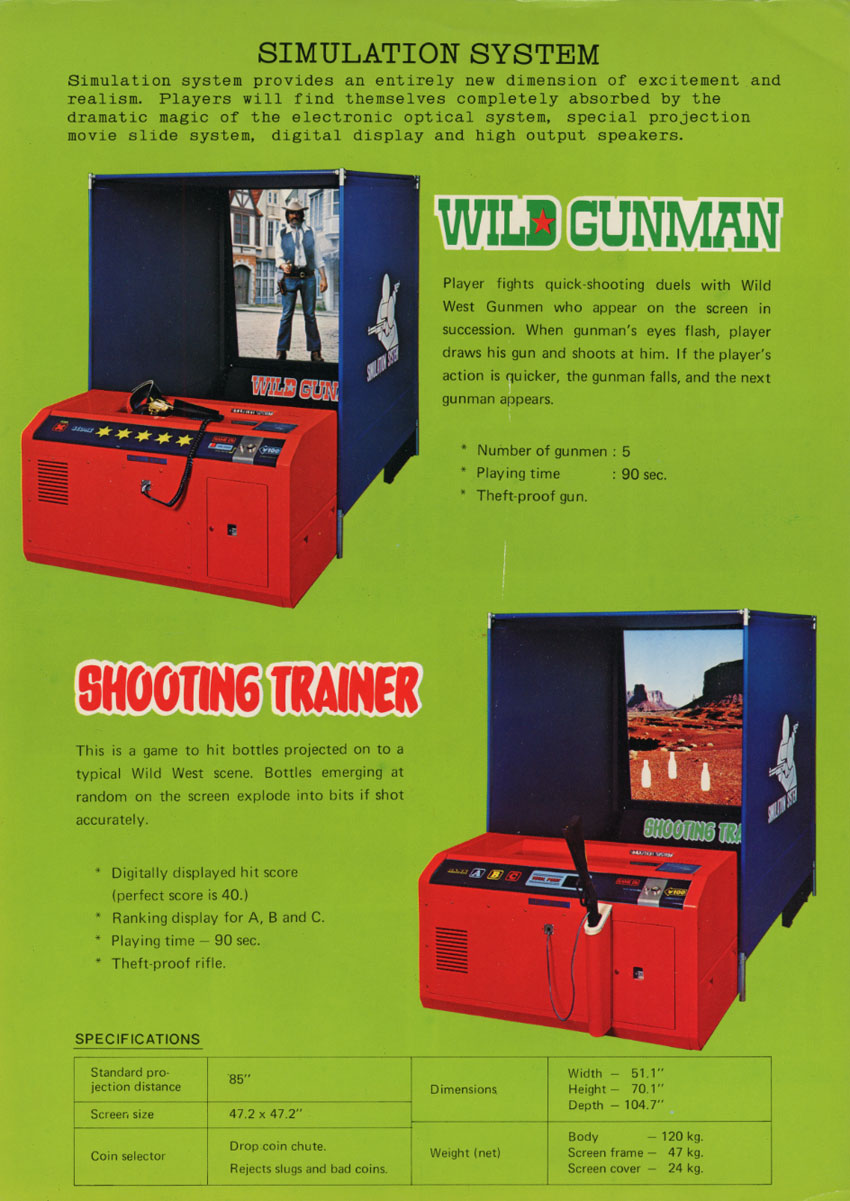
The Simulation System was popular, but a flaw with the original design quickly became apparent. For the light gun and projection technology to work reliably (or at all), the unit had be be set up in a dark room. While this was fine for some venues, it limited the number of locations the Simulation System could be used.
In 1975, Nintendo relaunched the Simulation System games in new, more robust units with the projection area enclosed by fabric tents.
Wild Gunman
Along with the hardware revision, Nintendo also changed the name of Gun Fight to Wild Gunman. It's speculated that this was to avoid confusion or an outright copyright dispute with arcade giant Bally Midway, who had released an earlier arcade game named Gun Fight.
The "Wild Gunman" name was borrowed from Nintendo's 1972 toy Kōya no Gunman Game (or Wild Gunman Game).
International Release
The revised Simulation System units were the first Nintendo product to be exported and sold in the United States. They were imported into America by none other than Sega.
Sky Hawk (1976)

The Sky Hawk unit used the same basic setup as the Simulation System games, but this time the gun was a two-handed machine gun with a mechanical recoil action.
The player took on the role of a gunner in a fighter plane. The footage was projected onto the screen, with enemy aircraft flying towards you. If you successfully shot down an enemy fighter, it would explode.
If players successfully shoot down every enemy fighter, they would win a free game.
Battle Shark (1977)
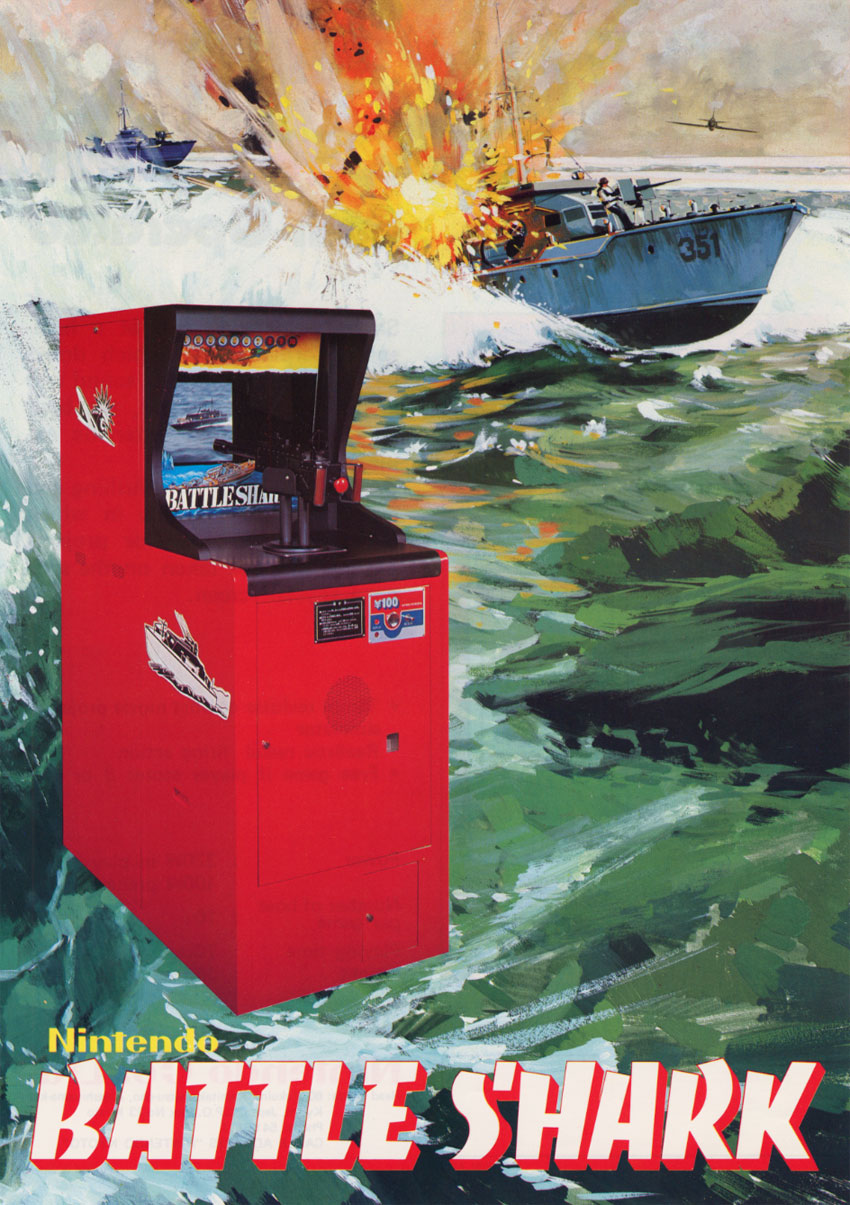
Battle Shark features the same two-handed machine gun setup as Sky Hawk, though this time the game is housed in a new style standalone cabinet with a smaller projection screen inside.
Players take on the role of the gunner on a speed boat. Shoot down enemy ships and other seafaring vessels.
Each play presented you with a 70 second video featuring 10 enemy boats. Scoring 8 or higher would win you a free game.
New Shooting Trainer (1977)
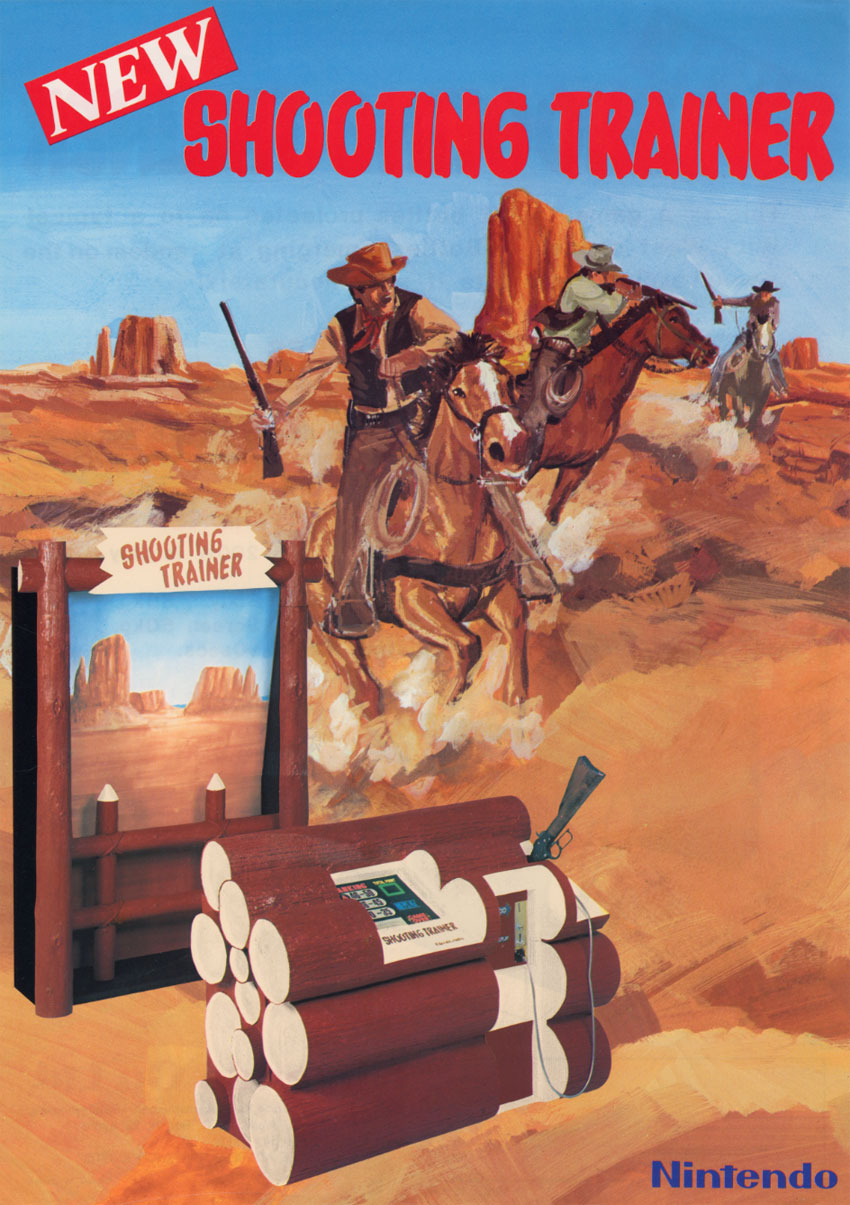
Nintendo revived the classic Shooting Trainer and housed it in a unique wooden-appearance case.
Bottles appear projected onto the wild west scene, and the player has to shoot them.
Each play takes around 90 seconds, and 50 bottles will appear. The player received a rank of A, B or C at the end of the game. Shoot 46 or more bottles to win a free game.
Test Driver (1978)
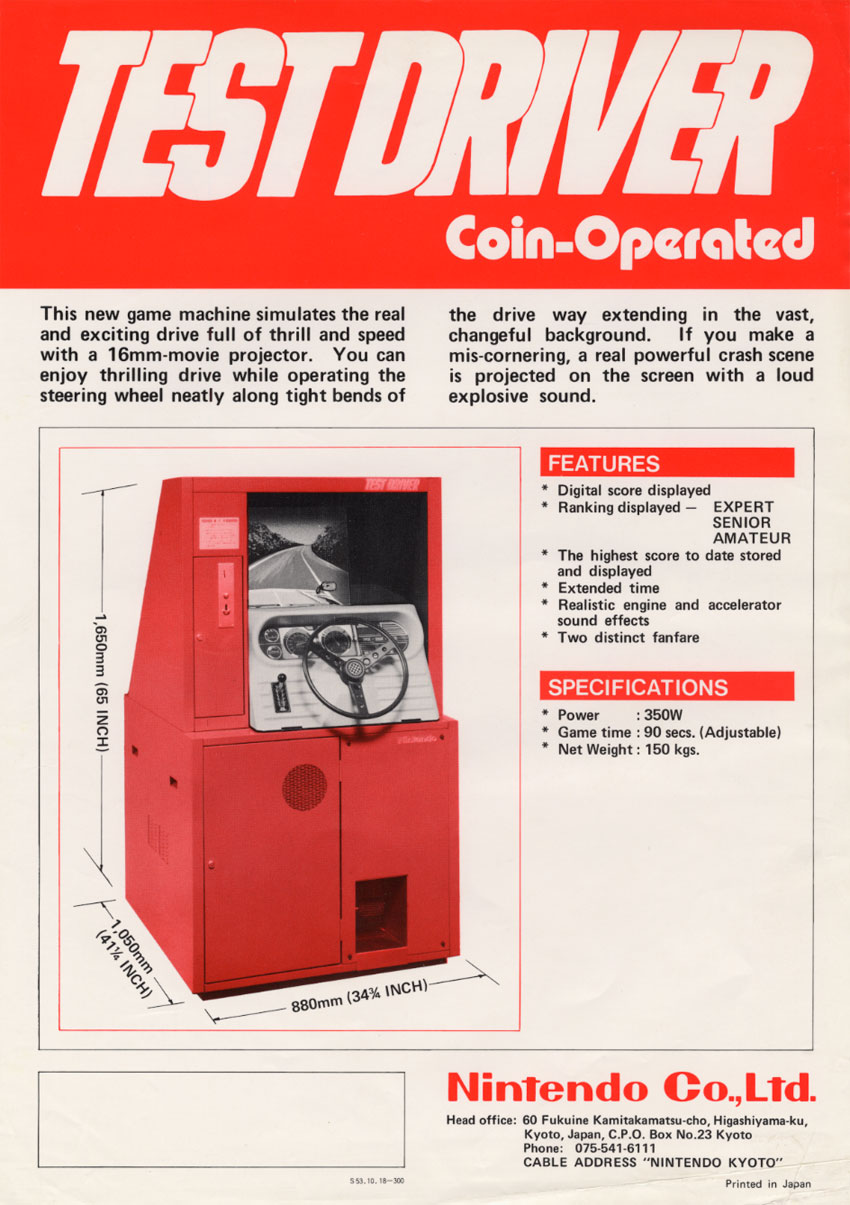
The final game in the Simulation System series dropped the guns in favour of a steering wheel.
Footage is projected of a car driving fast around perilous roads. The player must steer around bends and oncoming traffic skilfully, or risk triggering an explosive crash scene.
Each play takes 90 seconds, though an extended time feature was included. When time is up, the player is given a rank of Amateur, Senior or Expert.
Unreleased Simulation System Games

Fascination
A third game was developed for the Simulation System called Fascination (or Gun Fantasy). In this game, the player would have to shoot the clothes off footage of a dancing woman. While it didn't go into production, it was apparently popular with the developers.
Unknown hunting game
In promotional illustrations for the Simulation Series, there are indications that a hunting game featuring the shooting of wild animals may have been in development at one time.